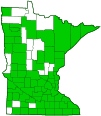dame’s rocket
(Hesperis matronalis ssp. matronalis)
Conservation • Wetland • Description • Habitat • Ecology • Use • Distribution • Taxonomy
Description |
||
Dame’s rocket is a 2′ to 3′ tall, showy, erect, biennial or short-lived perennial forb that rises from a taproot. The stems are erect, hairy, and often sparingly branched above the middle. The leaves are alternate, lance-shaped, 1″ to 4¾″ long, and ¾″ to 1½″ wide, becoming progressively smaller as they ascend the stem. The lower leaves are connected to the stem on a short leaf stalk. The upper leaves are stalkless. The blade tapers to a point at the tip and is rounded or wedge-shaped, but never heart-shaped or indented, at the base. The margins have small, widely spaced teeth. The upper and lower surfaces are hairy. The inflorescence is a loose, unbranched, 6″ to 12″ long cluster at the end of the stem and upper branches. The flowers are ¾″ to 1″ across, on hairy, 1″ long stalks. They have 4 rounded, purple petals that are clawed at the base. There are 4 sepals, each with a sac at the base, that are erect and form a mock corolla tube around the petal claws. There are 6 stamens, the four longer ones plainly visible at the center of the corolla. The flowers are fragrant, becoming more fragrant at night. The fruit is a 2″ to 4″ long, narrow pod with seeds in one row. The pod is constricted between the seeds. It is widely spreading on a stout stalk. |
||
Height |
||
2′ to 3′ |
||
Flower Color |
||
Purple, fading to pink or white |
||
Similar Species |
||
Money plant (Lunaria annua) lower leaves are heart-shaped at the base. The fruits are coin-shaped pods. Wild blue phlox (Phlox divaricata ssp. laphamii) is a shorter plant. The leaves are opposite, narrower, and untoothed leaves. The flowers have five petals. |
||
Habitat |
||
Roadsides, open woods, wood margins, moist bottomlands, disturbed sites. Full to partial sun. |
||
Ecology |
||
Flowering |
||
May to September |
||
Pests and Diseases |
||
|
||
Defense Mechanisms |
||
This and other mustards (family Brassicaceae) produce chemical compounds when cells are damaged that are toxic to most animals, fungi, and bacteria. |
||
Use |
||
|
||
Distribution |
||||
|
Sources |
|||
| 4/9/2023 | ||||
Nativity |
||||
Native to Europe and western Asia. Introduced as an ornamental. Escaped cultivation and now naturalized in North America. |
||||
Occurrence |
||||
|
||||
Taxonomy |
|||
| Kingdom | Plantae (Plants) | ||
| Division | Tracheophyta (Vascular Plants) | ||
| Subdivision | Spermatophytina (Seed Plants) | ||
| Class | Magnoliopsida (Dicots) | ||
Order |
Brassicales (Mustards, Capers, and Allies) | ||
Family |
Brassicaceae (mustard) | ||
| Tribe | Hesperideae | ||
Genus |
Hesperis (rocket) | ||
| Species | Hesperis matronalis (dame’s rocket) | ||
Five or six subspecies of dame’s rocket are recognized, depending on the source. Only the nominate subspecies, Hesperis matronalis ssp. matronalis, occurs in North America. |
|||
Subordinate Taxa |
|||
Synonyms |
|||
Crucifera matronalis Hesperis caucasica |
|||
Common Names |
|||
damask-violet dame’s rocket dame’s-violet sweet rocket |
|||
Glossary
Claw
A stalk-like narrowed base of some petals and sepals.
Corolla
A collective name for all of the petals of a flower.
Sepal
An outer floral leaf, usually green but sometimes colored, at the base of a flower.
Visitor Photos |
|||||
Share your photo of this plant. |
|||||
| This button not working for you? Simply email us at info@MinnesotaSeasons.com. Attach one or more photos and, if you like, a caption. |
|||||
Bill Reynolds |
|||||
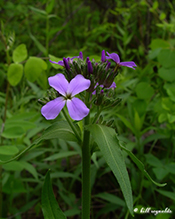 |
|||||
MinnesotaSeasons.com Photos |
|||||
Plant |
|||||
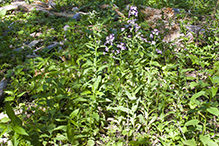 |
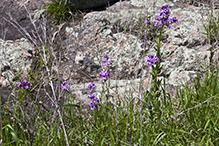 |
||||
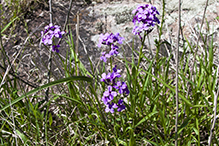 |
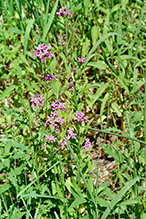 |
||||
Inflorescence |
|||||
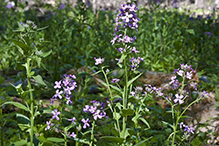 |
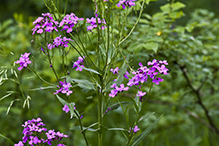 |
||||
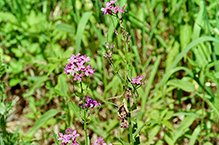 |
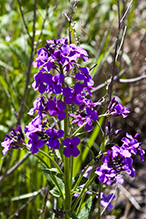 |
||||
Flowers |
|||||
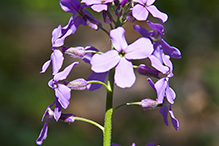 |
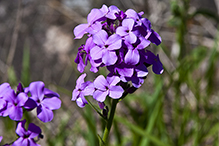 |
||||
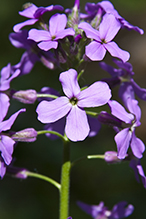 |
 |
||||
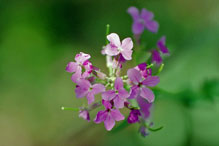 |
|||||
Sepals |
|||||
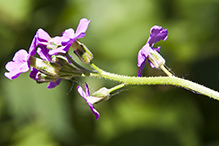 |
|||||
Leaves |
|||||
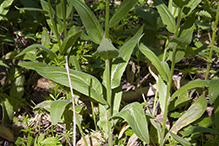 |
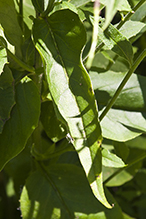 |
||||
Fruit |
|||||
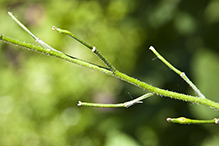 |
|||||

Visitor Videos |
|||
Share your video of this plant. |
|||
| This button not working for you? Simply email us at info@MinnesotaSeasons.com. Attach a video, a YouTube link, or a cloud storage link. |
|||
Other Videos |
|||
| Dame's Rocket, identification of the Wisconsin Invasive Species Hesperis matronalis uwcoopextension |
|||
About
Uploaded on Jan 31, 2011 This is part of a series of videos providing key characteristics for the identification of invasive plants listed in Wisconsin's invasive species administrative rule NR 40. These videos are produced by Dr. Mark Renz of the University of Wisconsin-Madison. For more information on invasive plants and invasive plant management in Wisconsin visit http://fyi.uwex.edu/weedsci or http://ipcm.wisc.edu/Publications/WeedSciencepublications/tabid/116/Default.aspx |
|||
| Dame's Rocket (Hesperis matronalis) wvoutdoorman |
|||
About
Published on May 11, 2012 Dame's Rocket (Hesperis matronalis) |
|||
| Dame's Rocket (Hesperis Matronalis) / Damask Violet - 2012-06-25 W3stlander |
|||
About
Published on Jun 27, 2012 Hesperis matronalis is a herbaceous plant species in the mustard family, Brassicaceae. It has numerous common names, including dame's rocket, damask violet, dame's violet, dames-wort, dame's gilliflower, night-scented gilliflower, queen's gilliflower, rogue's gilliflower, summer lilac, sweet rocket, mother-of-the-evening and winter gilliflower. ---------------- |
|||

Visitor Sightings |
|||||
Report a sighting of this plant. |
|||||
| This button not working for you? Simply email us at info@MinnesotaSeasons.com. Be sure to include a location. |
|||||
| Bill Reynolds 6/1/2014 |
Location: Pennington County |
 |
|||
MinnesotaSeasons.com Sightings |
|||||

|
Created: Last Updated: © MinnesotaSeasons.com. All rights reserved. |
